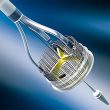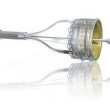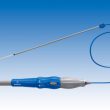Mechanically-expanding valve Lotus Edge was discontinued worldwide, as recently informed by its manufacturer, Boston Scientific. This is a voluntary recall of all Lotus valve inventory, and the immediate suspension of the program. The United States Food and Drug Administration (FDA) approved Lotus Edge in 2019 for patients with severe aortic stenosis and high surgical risk....
Lotus Returns with New Strength and the FDA Approval to Compete with Sapien3 and CoreValve Evolut R
After reports of some serious adverse events with first-generation Lotus, the device was pulled off the market—but it was not meant to be left in oblivion. Now, it is back, renewed and with the approval of the United States Food and Drug Administration (FDA), to compete directly with the two market leaders (Sapien and CoreValve),...
Lotus Valve in Real Life Patients: the near total lack of leaks is its greatest strength
Even though the incidence of complications in transcatheter aortic valve replacement (TAVR) have significantly decreased, there is one in particular that remains a concern since, when mild, it is associated to increased events rate. This complication is prosthetic paravalvular leak , which happens between the native annulus and the stent. The Lotus valve, completely repositionable, uses a...
REPRISE III: Need for Pacemaker and Paravalvular Leak with Lotus
A recent presentation at London Valves took a closer look at the REPRISE III trial as regards two points that generated much discussion, such as need for a pacemaker and paravalvular leak. REPRISE III had previously demonstrated that the Lotus is noninferior to first-generation CoreValve and Evolut R in terms of safety. Additionally, it proved to be superior...
Lotus vs Sapien 3, different mechanisms with similar results
The new generation devices for transfemoral transcatheter aortic valve replacement have been optimized to improve valve position and reduce residual aortic regurgitation. This study compared 30 day, 12 month and 24 month outcomes of the repositionable, Lotus valve, with controlled mechanical expansion, and the balloon-expandable valve Edwards Sapien 3. Primary end point was all cause mortality...
Lotus Valve performance related to pacemaker implantation in patients after TAVR
Courtesy of Dr. Agustín Vecchia. Paravalvular leak was once considered the greatest disadvantage of TAVR when compared to conventional surgery. Nowadays, new devices and more-experienced operators have managed to “control” this phenomenon, keeping related statistics within acceptable ranges. Repositionable-valve Lotus may probably offer the most effective solution for this event; however, it is associated with high rates of...
REPRISE III: Lotus and CoreValve Compared in High-Risk or Inoperable Patients
The efficacy of transcatheter aortic valve replacement (TAVR) has been well-established. However, its limitations include suboptimal deployment and paravalvular leak. The Lotus system is a fully repositionable and retrievable device with controlled mechanical expansion. It features an adaptive seal to minimize paravalvular leak, it does not require early pacing during deployment, and, given its early...
TAVR in Aortic Valve Stenosis with LOTUS
Operators: Alexandre Abizaid, Dimytri Siqueira, David Lebihan. Chairpersons: Martin Leon, José Eduardo Morais Rego Sousa. Panelists: José Armando Mangione, Josep Rodés Cabau, Fabio Sândoli de Brito Jr, Dimytri Alexandre de Alvim Siqueira, Eberhard Grube, Henrique Barbosa Ribeiro, Hugo Francisco Londero. Broadcasted on June 9th, 2016 by TBR Productions.
Live Case from Columbia University: Lotus and Watchman Devices
Operators: Dr. Robert Sommer, Dr. Susheel Kodali. Chairpersons: Martin Leon, José Eduardo Morais Rego Sousa. Panelists: José Armando Mangione, Josep Rodés Cabau, Fabio Sândoli de Brito Jr., Dimytri Alexandre de Alvim Siqueira, Eberhard Grube, Henrique Barbosa Ribeiro, Hugo Francisco Londero.
The largest series with LOTUS Valve published so far
This work represents the UK experience with the second generation repositionable and retrievable valve Lotus (Boston Scientific, Natick, Massachusetts). It prospectively included 228 patients of mean age 81.4 ± 7.6 and a logistic EuroScore of 17.5 ± 12.4. From the total number of patients, 187 (82%) received the valve for aortic stenosis, 7...







